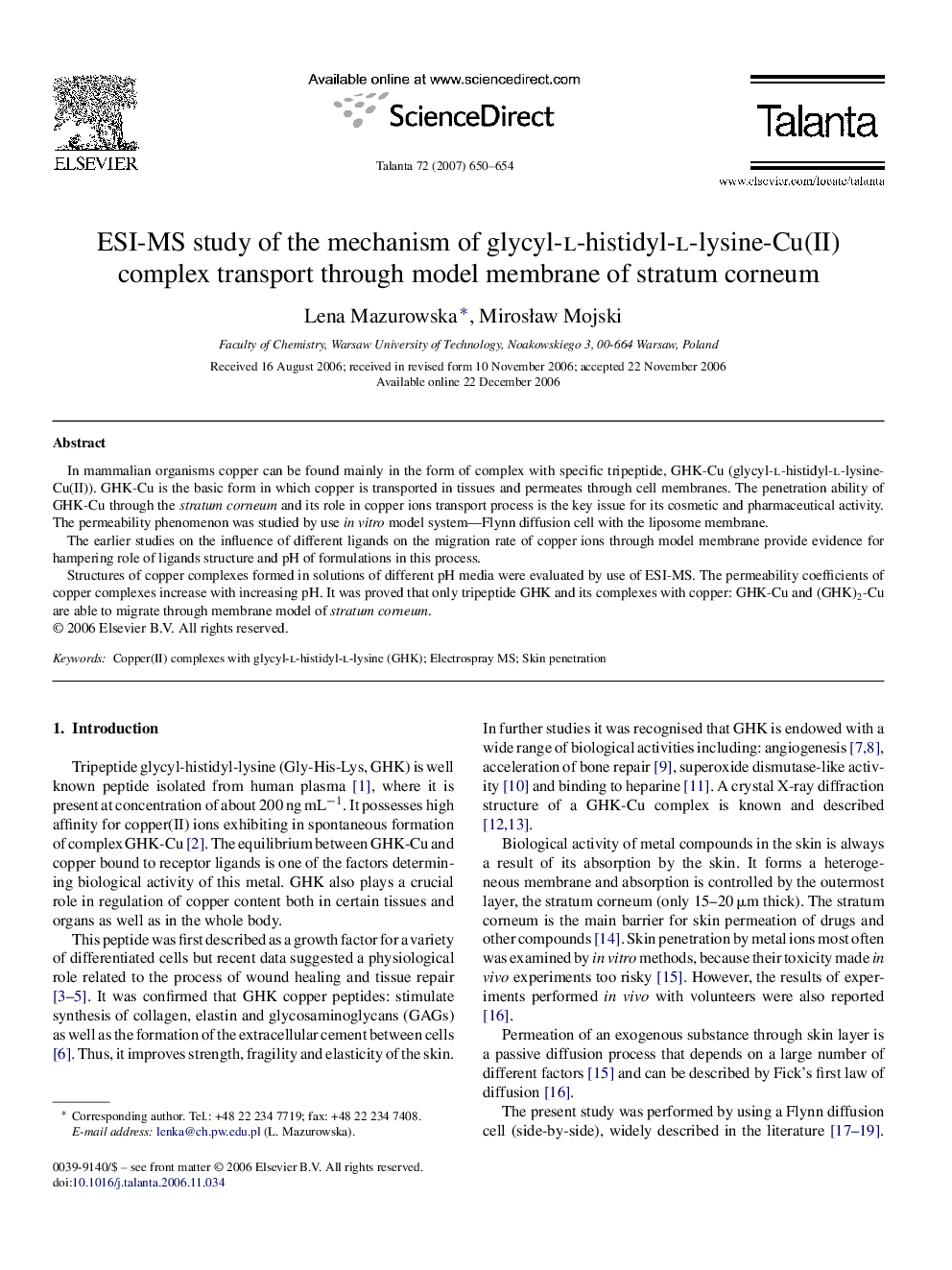| Article ID | Journal | Published Year | Pages | File Type |
|---|---|---|---|---|
| 1245990 | Talanta | 2007 | 5 Pages |
In mammalian organisms copper can be found mainly in the form of complex with specific tripeptide, GHK-Cu (glycyl-l-histidyl-l-lysine-Cu(II)). GHK-Cu is the basic form in which copper is transported in tissues and permeates through cell membranes. The penetration ability of GHK-Cu through the stratum corneum and its role in copper ions transport process is the key issue for its cosmetic and pharmaceutical activity. The permeability phenomenon was studied by use in vitro model system—Flynn diffusion cell with the liposome membrane.The earlier studies on the influence of different ligands on the migration rate of copper ions through model membrane provide evidence for hampering role of ligands structure and pH of formulations in this process.Structures of copper complexes formed in solutions of different pH media were evaluated by use of ESI-MS. The permeability coefficients of copper complexes increase with increasing pH. It was proved that only tripeptide GHK and its complexes with copper: GHK-Cu and (GHK)2-Cu are able to migrate through membrane model of stratum corneum.
